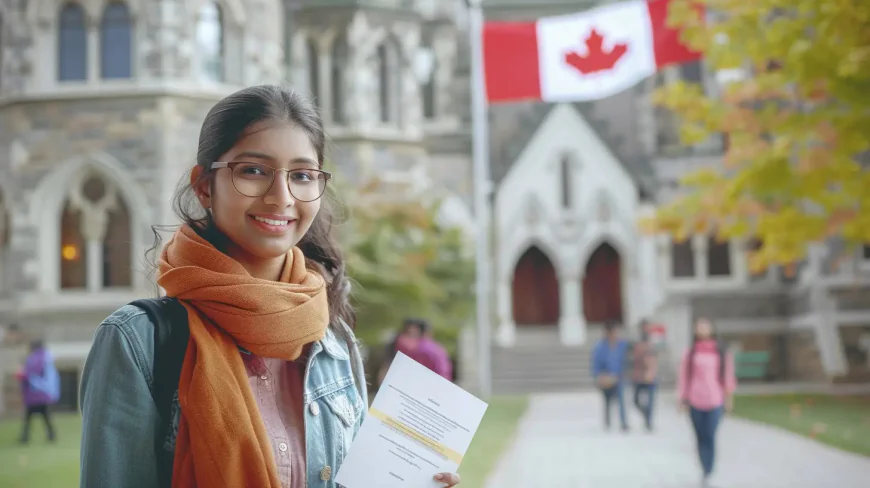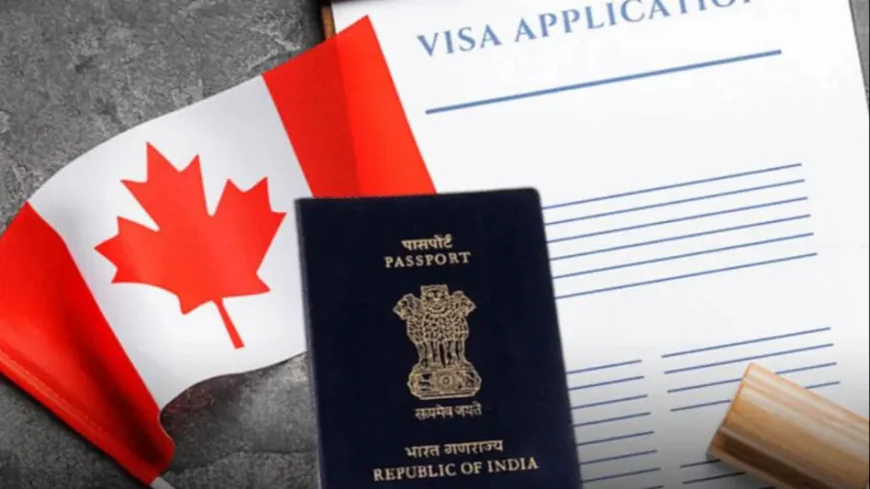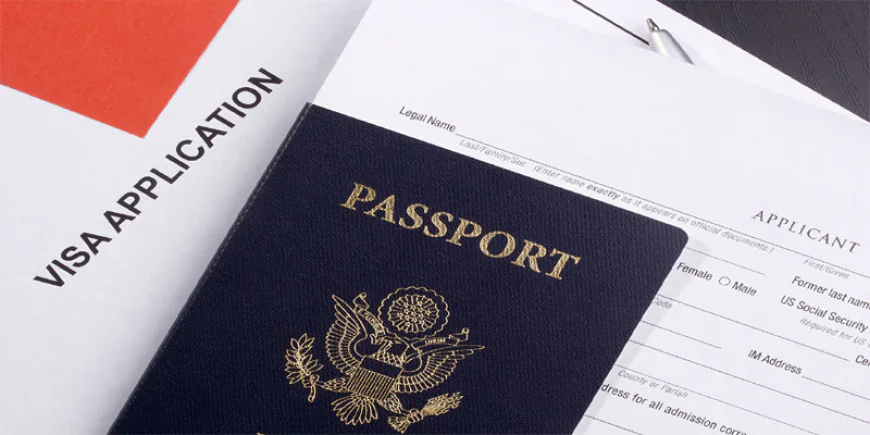Indian Students at a Crossroads: What Visa Refusals Mean for Canada
Rising study permit rejections are affecting Indian student enrolments in Canada, with consequences for universities and the economy.

Indian students have been a cornerstone of Canada’s international education ecosystem, enriching universities academically, culturally and financially.
Yet, the emergence of fraud, misrepresentation and non-compliance has triggered a significant policy response — high refusal rates, stricter verification and a tilt in the system’s balance.
The study permit refusals can act as a double-edged sword - in the sense that on one hand, they ensure the safety and reputation of such universities, but on the other hand, this will affect a majority of the student cohort numbers.
However, if we examine this case closely, perhaps there are other reasons, beyond the outstanding issue of fraud, that deter Canadian universities from accepting Indian students. Notably, struggles with infrastructure.

Why do Indian Students Consider Canada a Top Destination?
Over recent years, students from India have become a major presence in Canadian higher education. According to Western Union, in 2022, there were 226,450 Indian students in Canada, representing over 40 % of all international students in the country.
There are several factors that make Canada appealing to Indian students - the most important of which is the high-quality Canadian post-secondary education and the global recognition of Canadian degrees.
Moving forward, students who graduate from Canadian universities often find they can obtain post-graduation work permits. Thus, it offers a promising prospect for employment as well as eventual permanent residency.
Additionally, the courses are taught in English, which offers ease to these students. Equally, by bringing in Indian students, they contribute to diversity, foster cross-cultural exchange, and help meet demand in high-skill programs, such as engineering, technology, and business. These are highlighted in mobility reports by onestep.global.
For universities and colleges, the influx of motivated students from India has helped fill seats, supported campus revenues, and enabled programs to run at scale. According to an analysis by the Business Standard, the decline in Indian student enrollment is now expected to cost Ontario universities alone CAD $300 million in 2024-25 and an additional CAD $600 million in 2025-26.

The Gravity of the Situation: Why the Refusals?
The recent sharp increase in study permit refusals for Indian applicants raises serious concerns, both for Canada’s immigration and education systems. For example, in August 2025, approximately 74% of Indian study permit applications were rejected — up from about 32% in August 2023, as noted by Reuters.
Fraud and misrepresentation: Canadian authorities reported uncovering roughly 1,550 study permit applications in 2023 linked to fraudulent acceptance letters, mostly from India, according to Malay Mail.
Overload of infrastructure: The rapid influx of international students, particularly from India, has stretched housing markets to breaking point, with rents soaring and overcrowding becoming the norm in student-heavy cities.
Public services — from healthcare to transportation — are struggling to keep pace, revealing cracks in Canada’s infrastructure.
Infrastructure refers to the systems and resources that support daily life — such as housing, transportation, healthcare, and public services.
Immigration policy tightening: Canada has introduced stricter verification requirements, increased financial proof requirements, and capped study permits in some instances, making the process more challenging.
Authorities have introduced stricter verification procedures, meaning that every acceptance letter, financial document, and institutional registration undergoes deeper scrutiny to confirm authenticity.
This includes cross-checking college admissions, verifying student intent, and flagging suspicious applications.
Additionally, financial proof requirements have increased, requiring applicants to demonstrate higher levels of savings to ensure they can afford tuition and living expenses — a move aimed at preventing financial vulnerability and illegal employment once in Canada.
In some provinces, the federal government has also capped the number of study permits to control inflows and maintain quality oversight of designated learning institutions.

The Impact of Refusals: Statistics & Consequences
The scale of the refusals and their implications are significant.
As mentioned, according to Malay Mail, the rejection rate of ~74% for Indian study permits in August 2025.
Indian enrollments have fallen at some institutions — for example, the University of Waterloo reports a two-thirds decline in Indian undergraduate/graduate enrollments over recent years, as reported by Reuters.
Between January 2018 and May 2023, 7,528 Indian study permit applications were rejected due to misrepresentation, as noted by CanIndia.
This could include applicants who submitted fake financial documents, admission letters, or exaggerated credentials, intending to gain entry without genuine study plans.
Submitting fake financial documents, admission letters, or exaggerated credentials has serious consequences beyond individual visa refusals. It can result in long-term bans from Canada and block access to other immigration pathways.
Fraudulent applications also trigger stricter verification procedures, delays, and additional documentation requirements for all applicants, affecting genuine students.
Moreover, these actions can lead to reputational damage for universities, economic losses, and tighter immigration policies that impact the broader international student ecosystem.
Economic impact: business-standard.com A negative impact is the economic decline, as Indian student enrolments are significant contributors across Canada’s higher education sector.
Ontario universities alone face an estimated CAD $900 million loss over two years, according to Business Standard, largely due to reduced tuition revenue and lower demand for housing, food, and local services.
International students — particularly from India — have long served as a financial lifeline for Canadian institutions, paying significantly higher fees than domestic students and injecting billions into local economies.
The sudden downturn not only threatens universities’ financial stability but also risks job losses in sectors that rely on student spending, including retail, accommodation, and transportation.
For smaller colleges and regional towns, where international enrolments sustain entire communities, the consequences could be even more severe — underscoring how deeply intertwined education, immigration, and the economy have become in Canada.
As a positive outcome of refusals, it will gradually address the issue of non-compliance/no-shows.
A growing concern within Canada’s education and immigration framework is the issue of non-compliance and “no-shows” — students who receive study permits but fail to arrive or enrol in their designated institutions.
According to Scroll.in Indian nationals accounted for 19,582 out of approximately 49,676 international no-shows in March–April 2024, representing nearly 39.4% of the total.
This pattern raises red flags for immigration authorities, suggesting that a significant portion of applicants may be using study permits as a gateway for alternative motives, such as unauthorised work or relocation without fulfilling their academic commitments.

Indian students have long been a vital part of Canada’s higher education landscape, making significant academic, cultural, and financial contributions to the country.
Yet, the recent surge in study permit refusals, stricter verification, and tightened policies highlights the challenges of balancing integrity with opportunity.
While these measures help protect universities from fraud, misrepresentation, and system abuse, they also risk discouraging genuine students, reducing enrolments, and impacting local economies.


